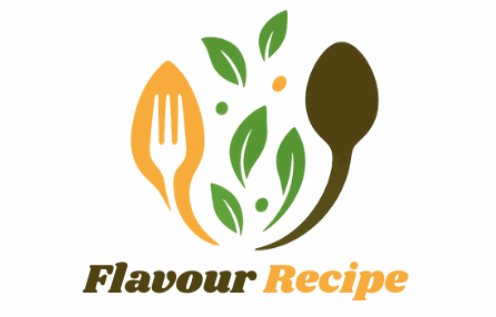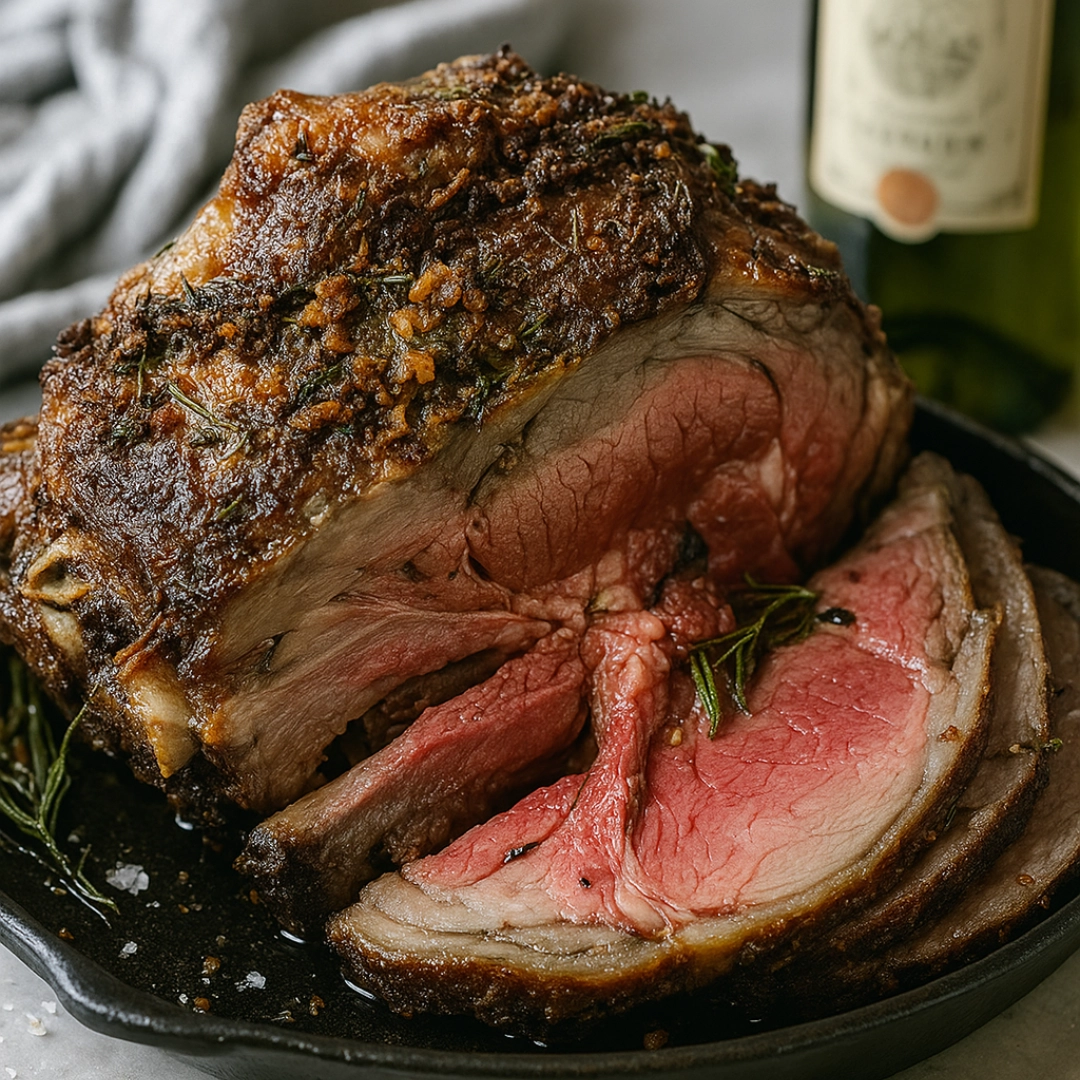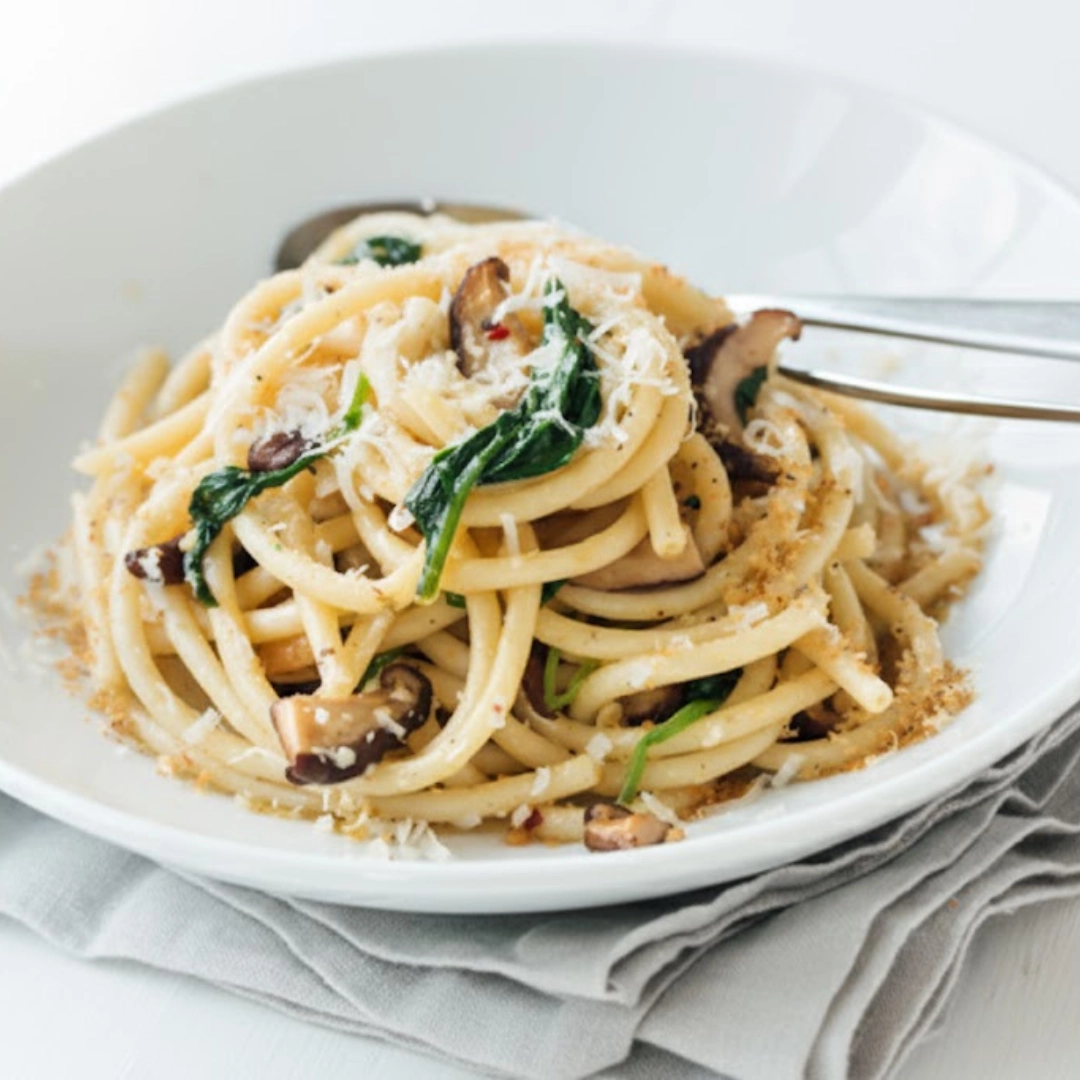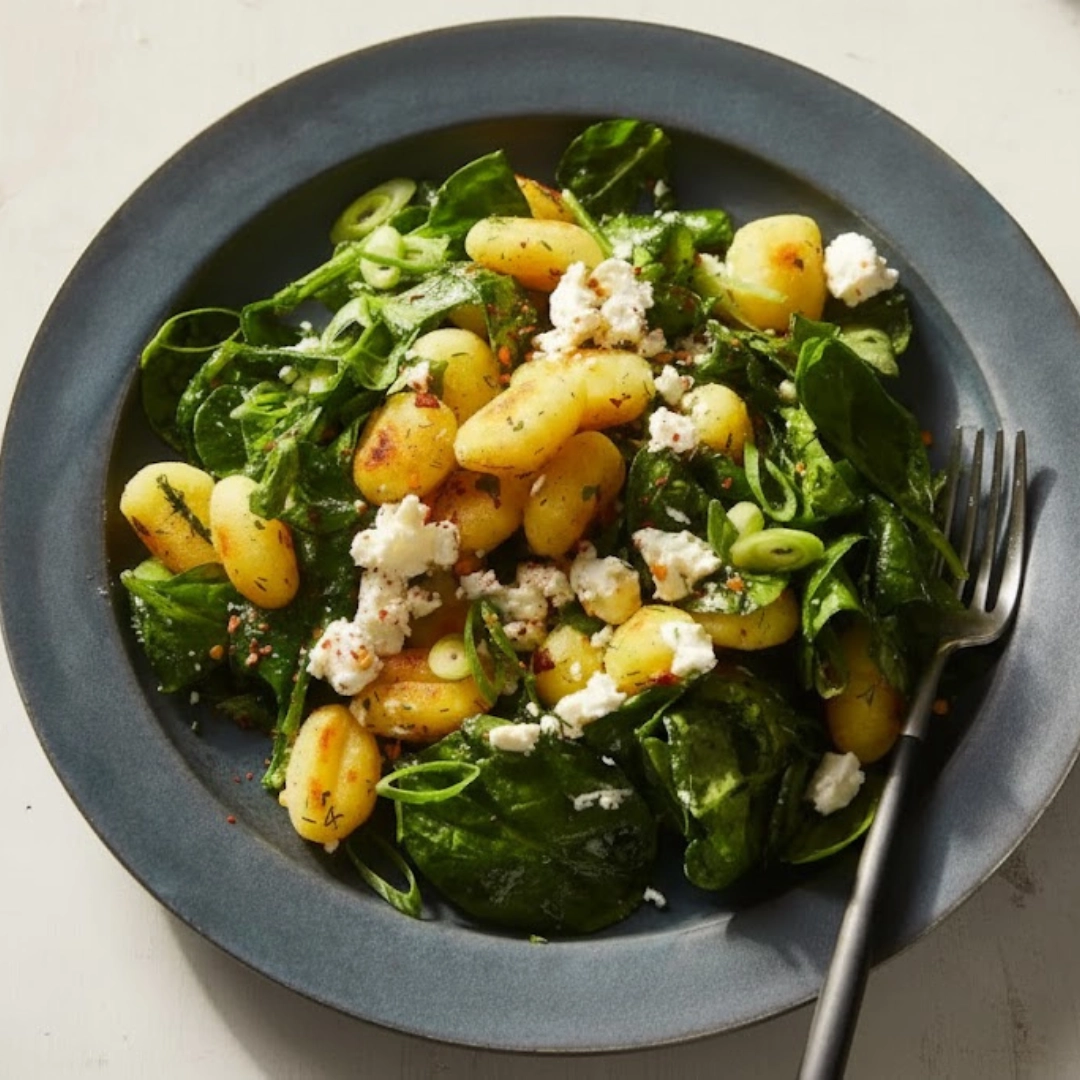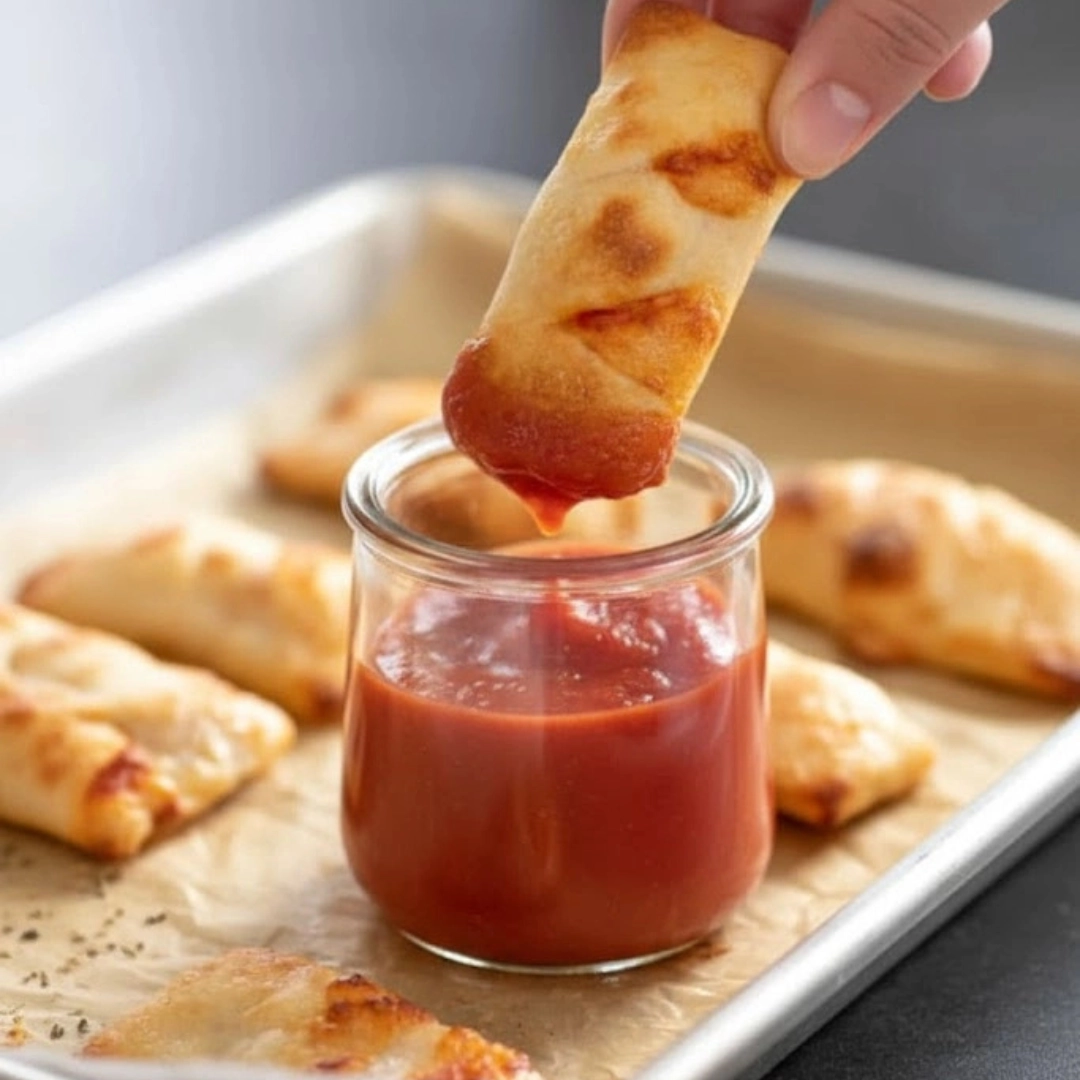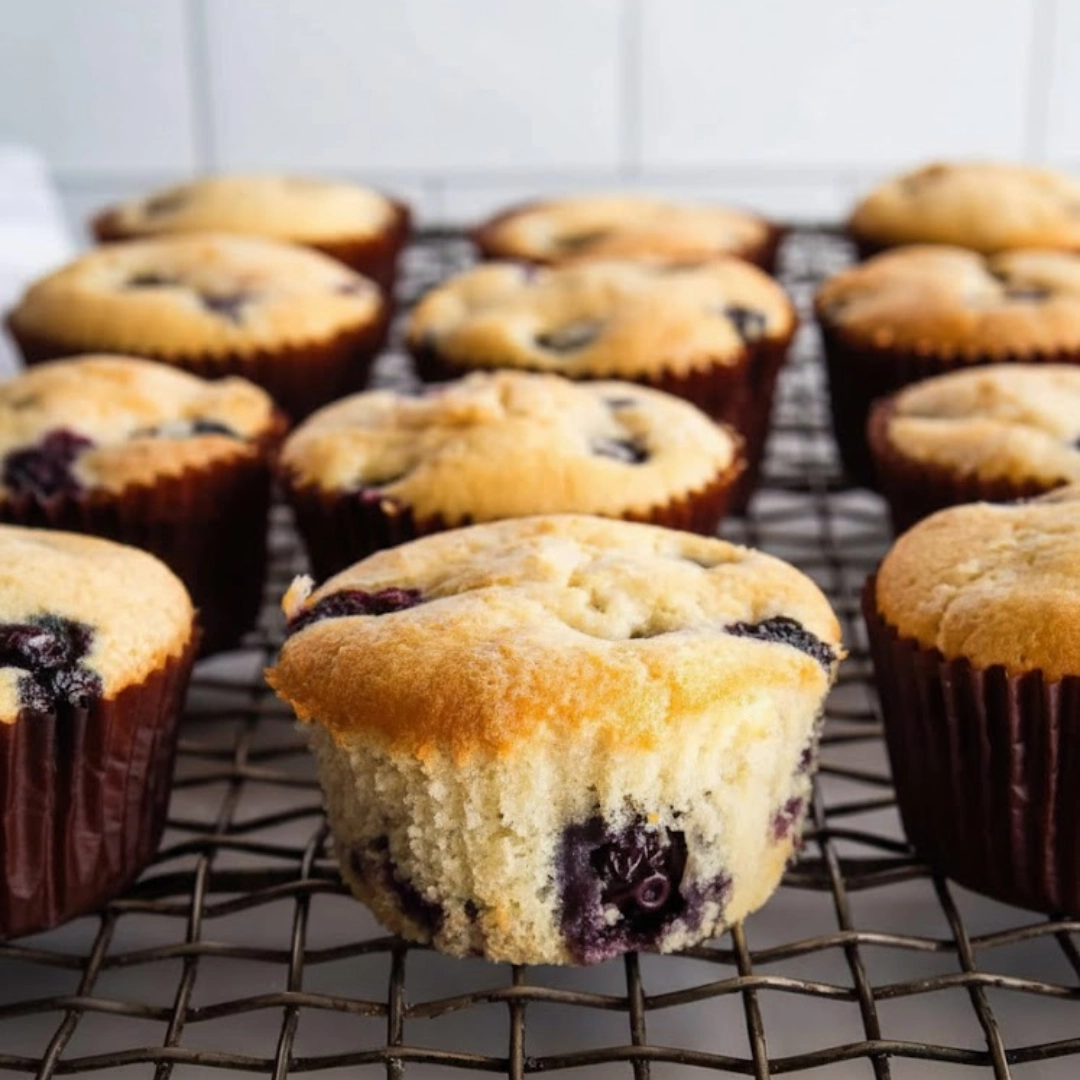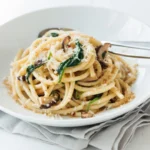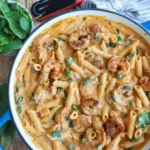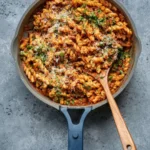The first time I roasted a small prime rib in my home oven, I’ll admitI was nervous. Growing up in a family of Sunday roasts and winter dinners, prime rib was always the grand centerpiece at my parents’ table. My father believed that this cut, more than any other, revealed a cook’s precision and patience. Years later, after many kitchen trials and temperature tests, I discovered that even a small 3- or 4-pound prime rib can deliver restaurant-worthy flavor if you understand how heat, timing, and rest work together.
This guide breaks down the prime rib roast oven method I rely on for consistent results. You’ll learn exactly how to season, sear, and slow-roast a smaller cut so it emerges with a golden herb crust and tender, blushing interior. With detailed temperature charts, expert timing adjustments, and science-based cooking techniques, even a modest-sized roast becomes the highlight of any dinner menu.
Whether you’re preparing a festive meal for four or perfecting your weekend roast, this method ensures every slice is succulent, evenly cooked, and beautifully aromatic. Let’s begin with the fundamentals understanding why this method works and how to select the perfect cut for your oven-roasted masterpiece.
Table of Contents
Why This Prime Rib Roast Oven Method Works
Cooking a prime rib roast in the oven especially a smaller one requires balance between high-heat caramelization and gentle internal cooking. The method below is built on the same culinary principles professional chefs use to achieve even doneness and a crisp, savory crust.
1. Controlled Heat Stages
Starting at a high temperature (500°F) allows the exterior to brown through the Maillard reaction, creating a flavorful crust that seals in natural juices. After this initial sear, lowering the oven to 325°F ensures the interior cooks gradually without toughening the meat. This two-stage technique is ideal for smaller roasts, which cook faster and can easily dry out if exposed to constant high heat.
2. Precision Temperature Monitoring
Unlike large roasts, smaller cuts of prime rib have less mass, meaning their internal temperature rises more quickly. Using a meat thermometer or probe that stays in the roast helps you track the exact moment it reaches the target temperature no guessing, no overcooking. It’s the single best way to guarantee a tender, medium-rare center.
3. Resting for Juiciness
After roasting, a 25–30 minute rest under foil allows heat to redistribute evenly and juices to reabsorb into the meat. Skipping this step is one of the main reasons home-cooked roasts turn out dry. This pause also allows for carryover cooking, which naturally raises the internal temperature by 5–10°F to the perfect finish point.
4. Seasoning at the Right Time
Seasoning early at least an hour before cooking gives salt time to penetrate the outer layer. This dry-brining effect enhances flavor while slightly firming the surface, helping the roast form a beautiful crust during the sear stage.
What You’ll Need
A perfect prime rib roast oven result depends on two things: the right cut of meat and careful attention to your tools. Small roasts respond best to precise preparation every step, from seasoning to temperature monitoring, affects flavor and tenderness.
Ingredients for a 3–4 lb Prime Rib Roast
(Serves 4–6)
- 3–4 pounds beef prime rib roast, bone-in or boneless
- 2 teaspoons kosher salt, plus extra for pre-seasoning
- 1 ½ teaspoons freshly ground black pepper
- 2 teaspoons fresh rosemary, finely chopped (or 1 teaspoon dried)
- 1 teaspoon fresh thyme leaves, finely chopped (or ½ teaspoon dried)
- 6 cloves garlic, minced
- ¼ cup olive oil (or melted unsalted butter for a richer crust)
- Optional: 1 tablespoon Dijon mustard for added crust adhesion
- Horseradish cream or au jus, for serving
Substitution Tips:
- If rosemary or thyme aren’t available, substitute Italian seasoning for a balanced herb flavor.
- For a milder profile, swap garlic for shallot paste or roasted garlic.
- Butter adds deeper browning, while olive oil keeps the rub lighter and aromatic.
Kitchen Tools You’ll Need
Each tool plays a small but crucial role in controlling oven heat and achieving even results:
- Roasting pan or cast-iron skillet retains and distributes heat evenly.
- Rack lifts the roast for air circulation and uniform browning.
- Meat thermometer or oven probe essential for accuracy.
- Carving knife long and sharp for smooth, clean slices.
- Aluminum foil for resting and tenting the roast post-bake.
- Paper towels to pat the roast dry before seasoning (a dry surface = better sear).
Pro Tip: If you don’t own a roasting rack, the wire trivet from your Instant Pot or air fryer basket can substitute perfectly beneath the roast.
Selecting the Right Cut
When preparing a small prime rib roast in the oven, the quality and structure of the cut matter just as much as your cooking method. A small roast typically 2 to 5 pounds can be either bone-in or boneless, and each option brings unique advantages to the table.
Choosing the Grade
Prime rib is named for its cut, not its USDA grade, but understanding the difference helps you buy wisely:
- Prime Grade: Highest marbling and tenderness. Ideal for special occasions.
- Choice Grade: Excellent flavor and value, often the best balance for home cooks.
- Select Grade: Leaner and less marbled; not ideal for slow roasting, but manageable with extra fat or butter in the rub.
When buying a smaller roast, opt for Choice or Prime the extra marbling prevents dryness and enhances flavor during roasting.
Bone-In vs. Boneless
- Bone-In: The bones act as a natural roasting rack, providing insulation and extra flavor. The meat cooks slightly slower but stays juicier. If you buy bone-in, ask your butcher to cut and tie the bones back on so you can easily remove them after roasting.
- Boneless: Easier to carve and slightly faster to cook, making it perfect for a smaller 3–4 lb roast. Just be sure to place it on a rack or trivet to allow heat to circulate beneath.
Butcher’s Tip
When ordering, ask your butcher for “a 3- to 4-pound ribeye roast, small end, tied for roasting.” The “small end” (near the loin) is more tender, while the “large end” (near the chuck) has richer marbling. Both are delicious, but the small end gives a finer, more uniform texture.
Step-by-Step: How to Cook a Small Prime Rib Roast in the Oven
Cooking a smaller prime rib roast in the oven is all about precision. Because the meat has less mass than a traditional holiday roast, it reaches temperature quickly, so timing and thermometer accuracy are everything. Follow these professional steps for a perfectly tender, rosy center and a crisp herb crust.
Step 1 – Bring the Roast to Room Temperature
Remove the roast from the refrigerator one hour before cooking. Pat it completely dry with paper towels to remove excess moisture. This allows the exterior to brown properly and ensures the meat cooks evenly from edge to center. Season it lightly with salt and cover it loosely with plastic wrap while it rests.
Step 2 – Prepare the Herb and Garlic Rub
In a small bowl, combine salt, pepper, rosemary, thyme, minced garlic, and olive oil to form a paste. Rub the mixture over the entire surface of the meat, pressing it into all sides and crevices. For deeper flavor, apply the rub up to 24 hours in advance, cover, and refrigerate overnight. Let it return to room temperature before roasting.

Step 3 – Sear at High Heat
Preheat the oven to 500°F (260°C) and adjust the rack so the roast sits in the center of the oven. Place the roast in a heavy roasting pan or cast-iron skillet bones down if using bone-in, or on a rack if boneless. Roast uncovered for 15 minutes.
This high heat triggers the Maillard reaction, forming a deep brown crust and sealing in surface flavor compounds.
Step 4 – Slow Roast at a Controlled Temperature
Reduce the oven to 325°F (165°C) and continue cooking for:
- 10–12 minutes per pound for rare
- 13–14 minutes per pound for medium-rare
- 15 minutes per pound for medium
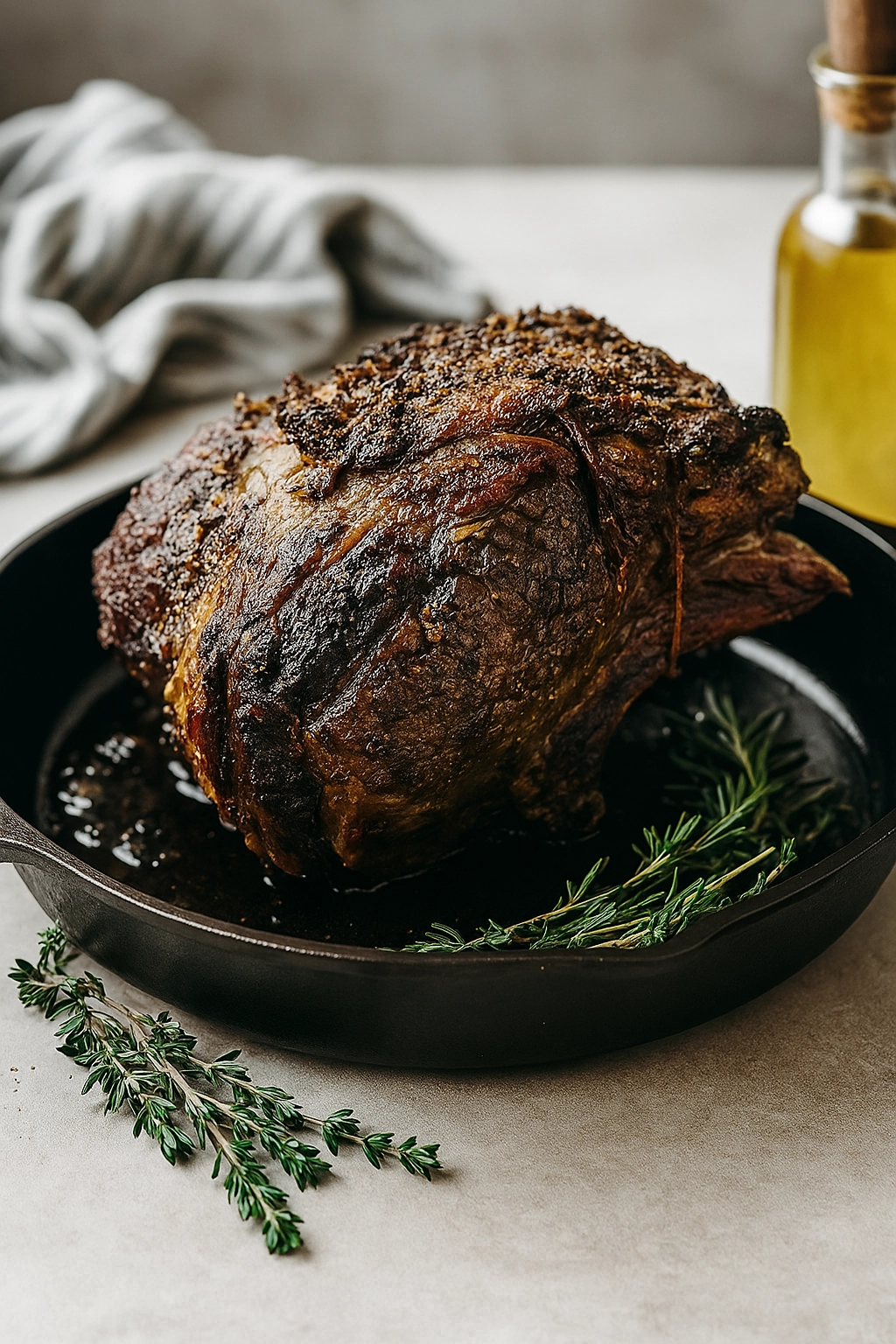
Insert a meat thermometer into the thickest part of the roast (not touching bone). When it reads 5–10°F below your desired final temperature, remove it from the oven carryover heat will finish the job.
Step 5 – Rest the Roast
Transfer the roast to a cutting board and tent it loosely with foil. Allow it to rest for 25–30 minutes. During this time, juices redistribute through the fibers, and the internal temperature rises naturally. Resting is non-negotiable for tenderness.
Step 6 – Carve and Serve
Cut the string holding the bones (if bone-in) and set the bones aside. Slice the roast against the grain into ½-inch slices using a sharp carving knife. Spoon a little of the pan drippings over each slice, or serve with warm au jus or horseradish cream.
Doneness Temperature Chart for Small Prime Rib Roasts
Perfecting a prime rib roast in the oven depends on pulling it at just the right internal temperature. Because smaller roasts rise in heat faster and have less carryover cooking time than larger cuts, precision here makes all the difference.
| Doneness Level | Remove from Oven at | Final Temp After Rest | Color & Texture |
|---|---|---|---|
| Rare | 115°F (46°C) | 120°F (49°C) | Deep red center, cool to warm texture |
| Medium Rare | 125°F (52°C) | 130°F (54°C) | Warm pink center, juicy and tender |
| Medium | 135°F (57°C) | 140°F (60°C) | Light pink center, firmer texture |
| Medium Well | 145°F (63°C) | 150°F (65°C) | Slight pink hue, fully cooked edges |
Professional Tip:
Always insert your thermometer into the center of the thickest section of the roast, avoiding bones or fat pockets. A probe thermometer that stays in the roast during cooking is the most reliable way to avoid overcooking.
Carryover Cooking Explained:
When the roast leaves the oven, residual heat continues to cook the interior, raising it by 5–10°F. Removing the meat early ensures it finishes perfectly during the resting period never dry, never gray.
Flavor Variations and Expert Tips
Once you’ve mastered the core prime rib roast oven method, small tweaks in seasoning and preparation can transform the flavor profile entirely. Below are several expert-tested variations and kitchen insights that elevate your roast to professional standards.
1. Herb Butter Crust
Replace the olive oil with softened unsalted butter. Mix it with your herbs and garlic, then spread evenly over the roast before searing. Butter’s milk solids brown quickly, creating a richer, caramelized crust and deeper aroma. For an extra flourish, baste the roast with its own drippings halfway through cooking.
2. Peppercorn Crusted Prime Rib
Combine crushed black, pink, and green peppercorns with coarse salt and press them firmly into the meat before roasting. This creates a bold, steakhouse-style crust that pairs beautifully with au jus or brandy cream sauce.
3. Garlic and Rosemary Infused Oil
Simmer olive oil with smashed garlic cloves and rosemary sprigs for 10 minutes, then strain and cool. Use this infused oil for your rub to achieve subtle depth and consistent seasoning throughout the surface.
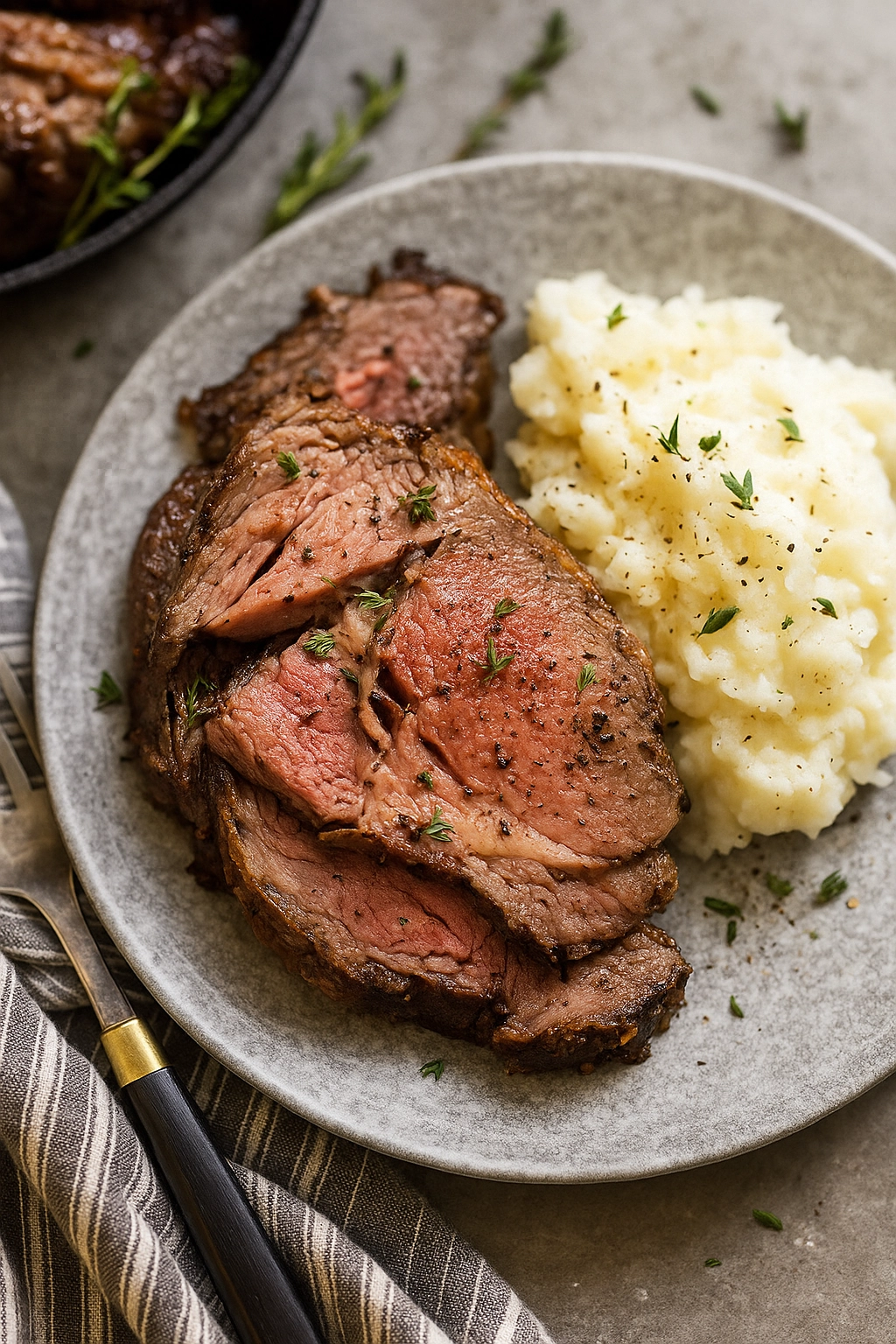
4. Small-Oven Adjustment
If your oven runs hot or is compact, lower the roasting temperature slightly (to 315°F) after searing and use a heavy cast-iron pan. Cast iron holds heat more steadily, preventing the outer layer from cooking too quickly before the interior reaches target temperature.
5. Resting and Slicing Mastery
After resting, always carve against the grain to shorten muscle fibers and maintain tenderness. Wipe your knife between slices to keep edges clean and presentation professional.
These refinements may seem small, but they define the difference between a good roast and an exceptional one precise texture, balanced flavor, and a finish that speaks of experience.
Serving Ideas and Pairings
A beautifully roasted prime rib roast in the oven deserves sides that complement its richness without overshadowing the meat’s natural flavor. Whether you’re creating a holiday menu or a refined family dinner, balance your plate with light, bright, and creamy accompaniments that highlight the roast’s tenderness.
Classic Pairings
- Creamy Mashed Potatoes or Dauphinoise Potatoes – Smooth, buttery, and perfect for soaking up savory pan drippings.
- Roasted Root Vegetables – Caramelized carrots, parsnips, and shallots add earthy sweetness that rounds out the meal.
- Yorkshire Pudding or Buttery Dinner Rolls – Ideal for sopping up juices or serving alongside horseradish cream.
- Green Beans Almondine or a Crisp Salad – Offers freshness to contrast the roast’s richness.
Modern and Creative Pairings
- Pair your roast with the Mediterranean Pasta Salad Recipe for a bright, herb-forward counterpoint that complements the roast’s savory depth.
- Serve the Grinder Pasta Salad Recipe as a hearty, tangy side when entertaining larger groups it balances the fattiness of the beef beautifully.
- For appetizers, try the Buffalo Chicken Dip Recipe to bring creamy spice and texture contrast before the main course.
- As a warm, comforting side, Black-Eyed Peas Recipe pairs wonderfully with the roast’s juices and offers a Southern-inspired twist.
Beverage Pairings
- Red Wine: Cabernet Sauvignon, Syrah, or Bordeaux blend for bold flavor balance.
- Beer: Malty amber ale or porter for roasted undertones.
- Non-Alcoholic: Sparkling cranberry juice or rosemary lemonade for refreshing contrast.
A well-paired menu turns your small oven-roasted prime rib into a complete dining experience refined, comforting, and beautifully cohesive.
Storage and Reheating
Properly storing and reheating your prime rib roast oven leftovers ensures that every slice stays tender and flavorful. Because small roasts are more delicate than large ones, they require gentle reheating methods to preserve their moisture and texture.
Storing Leftovers
- Refrigeration: Wrap slices tightly in foil or place in an airtight container. Refrigerate for up to 4 days. Keep any leftover pan juices separately to add moisture during reheating.
- Freezing: Wrap cooled slices individually in parchment, then seal in a freezer bag. Freeze for up to 2 months. To reheat, thaw overnight in the refrigerator before warming.
Reheating Without Drying Out
- Oven Method (Best for Texture):
Preheat oven to 250°F (120°C). Place slices in a baking dish with a few tablespoons of broth or pan drippings. Cover with foil and warm until internal temperature reaches 130°F (54°C), about 10–15 minutes. - Stovetop Steam Method (Quick and Moist):
Heat a skillet over low heat, add a splash of broth, then cover and steam-simmer slices for 1–2 minutes per side. This restores moisture and prevents overcooking. - Sous Vide Reheat (Precision Option):
For an exact medium-rare finish, seal slices in a food-safe bag and heat in a 135°F (57°C) water bath for 30–40 minutes.
Important Note
Avoid microwaving unless absolutely necessary it heats unevenly and can toughen the meat. If using, add moisture and heat on low power in short intervals.
Handled carefully, your leftover prime rib remains as luscious and juicy as the day it was carved.
Common Mistakes to Avoid
Even experienced cooks can misjudge a prime rib roast in the oven, especially when working with a smaller cut. Avoiding these common pitfalls will help ensure a consistently juicy, evenly cooked roast every time.
Even experienced cooks can misjudge a prime rib roast in the oven, especially when working with a smaller cut. Avoiding these common pitfalls will help ensure a consistently juicy, evenly cooked roast every time.
1. Skipping the Resting Period
Cutting into the roast immediately after it leaves the oven causes precious juices to escape, leaving the meat dry. Always allow the roast to rest at least 25–30 minutes, tented loosely with foil, so the juices redistribute evenly.
2. Cooking Straight from the Refrigerator
Cold meat cooks unevenly—its exterior can overcook while the center remains underdone. Bring the roast to room temperature for about one hour before roasting. This ensures a uniform temperature gradient throughout the meat.
3. Overcooking
A small roast can go from perfect to overdone in just a few minutes. Use a probe thermometer or instant-read thermometer and monitor closely during the final stage. Remember to remove the roast when it’s 5–10°F below your target temperature to allow for carryover cooking.
4. Neglecting the Crust
Failing to pat the roast dry before seasoning prevents proper browning. Moisture on the surface turns to steam instead of caramelizing. Always start with a thoroughly dried roast for a crisp, flavorful crust.
5. Slicing the Wrong Way
Prime rib must be cut against the grain, meaning perpendicular to the muscle fibers. Slicing with the grain produces chewy, stringy pieces rather than tender, buttery slices.
6. Forgetting to Taste the Seasoning Rub
Before applying the rub, taste a small pinch. Adjust the salt and herbs to suit your palate—every brand of salt and type of herb varies in intensity.
Avoiding these mistakes transforms an intimidating cut into an elegant and reliable centerpiece worthy of any dinner table.
Follow us in Pinterest.
FAQs – Prime Rib Roast Oven
1. How long should I cook a small prime rib roast per pound?
For a 3–4 lb roast, cook at 500°F for 15 minutes to sear, then reduce the oven to 325°F. Continue roasting for 13–15 minutes per pound, depending on your desired doneness. Always verify with a meat thermometer rather than relying solely on time.
2. Should I cover my prime rib roast while it cooks?
No. Leave the roast uncovered to allow the surface to brown and develop a crust. Covering traps steam and softens the exterior, preventing that signature golden crust.
3. What’s the best temperature for a medium-rare prime rib?
Remove the roast from the oven when it reaches 125°F, then rest for 25–30 minutes. The internal temperature will rise to 130°F, giving you a perfectly pink, medium-rare center.
4. Can I use this method for a larger roast?
Yes, this same prime rib roast oven technique works for any size. For roasts over 6 pounds, extend the cooking time but maintain the same temperature stages—high-heat sear followed by a lower roasting temperature.
How to Cook a Small Prime Rib Roast in the Oven
Learn how to cook a small prime rib roast in the oven with an herb-garlic crust, precise temperature timing, and a juicy, tender finish worthy of any special meal.
- Prep Time: 1 hour
- Cook Time: 1 hour 45 mins
- Total Time: 2 hours 45 mins
- Yield: 6 servings 1x
- Category: Main Dish
- Method: Oven Roast
- Cuisine: American
Ingredients
3–4 pounds beef prime rib roast, bone-in or boneless
2 teaspoons kosher salt
1½ teaspoons freshly ground black pepper
2 teaspoons fresh rosemary, finely chopped
1 teaspoon fresh thyme, finely chopped
6 cloves garlic, minced
¼ cup olive oil or melted butter
Horseradish cream or au jus for serving
Instructions
1. Remove roast from refrigerator 1 hour before cooking and pat dry.
2. Combine salt, pepper, rosemary, thyme, garlic, and olive oil into a rub; coat the roast evenly.
3. Preheat oven to 500°F (260°C). Roast uncovered for 15 minutes to create a crust.
4. Reduce temperature to 325°F (165°C) and continue roasting 13–15 minutes per pound until desired doneness.
5. Remove from oven when internal temperature is 5–10°F below target; tent with foil.
6. Rest for 25–30 minutes to allow juices to redistribute.
7. Carve against the grain and serve with au jus or horseradish cream.
Notes
For medium-rare, remove roast at 125°F and rest until 130°F.
Always use a meat thermometer for accuracy.
Resting is essential for tenderness.
This content is for educational purposes only and does not replace professional dietary or medical advice.
Nutrition
- Serving Size: 1 slice (about 6 oz)
- Calories: 720
- Sugar: 1g
- Sodium: 105mg
- Fat: 65g
- Saturated Fat: 26g
- Unsaturated Fat: 30g
- Trans Fat: 0g
- Carbohydrates: 1g
- Fiber: 0g
- Protein: 32g
- Cholesterol: 135mg
